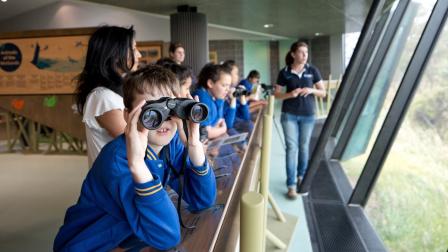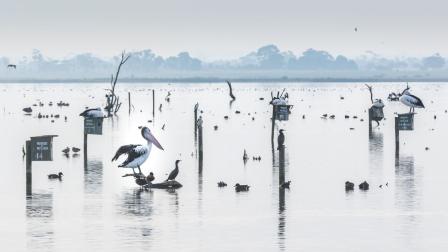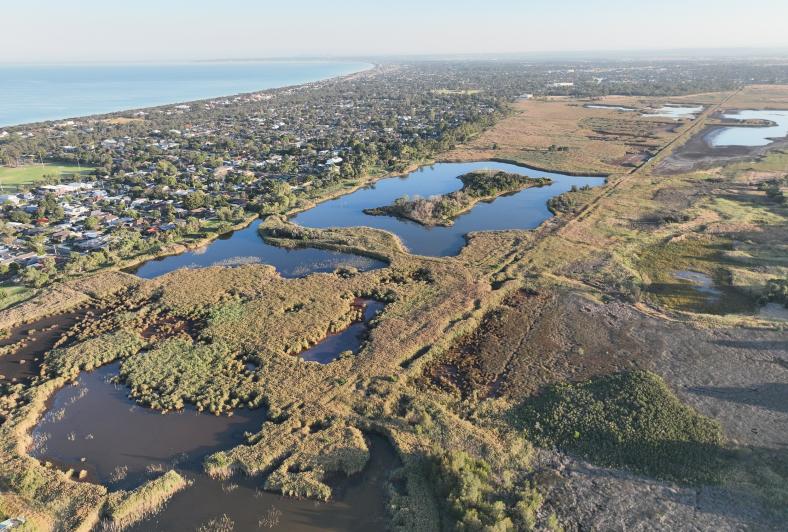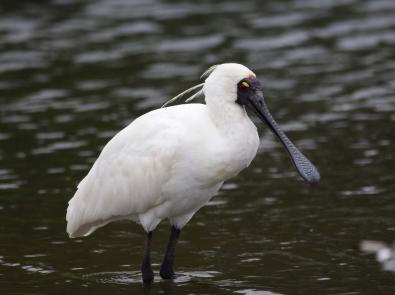We are renewing the management plan that guides how we look after this important site, balancing the needs of its biodiversity within its urban environment. The current plan in place is available for download and the renewed version will be uploaded to the website when finalised.
The Edithvale-Seaford Wetland is the largest natural wetland of its type in the Port Phillip and Westernport basins. It is all that remains of Carrum Carrum Swamp, which once covered more than 4,000 hectares from Mordialloc in the north to Frankston in the south.
When European settlers arrived, this large wetland supported many animals and plants including Brolga and Magpie Goose — now both extinct in the area. However, Patterson River was dug through the middle of the swamp in 1879, gradually draining water to provide flood protection and farmland.
The remaining wetland areas have been kept to provide flood protection, and include:
- Edithvale Wetlands (101 hectares)
- Seaford Wetlands (158 hectares)
Watch the following video for an overview of the wetland:
A wetland of international importance
In 2001 the Edithvale-Seaford Wetland was listed as a Wetland of International Importance under the Ramsar Convention. It was recognised because it:
- is the last remaining examples of the Carrum Carrum Swamp, with a variety of permanent and seasonal, freshwater and saltwater wetlands
- supports populations of the Australasian Bittern, a bird of state significance and threatened in Victoria
- supports more than 1% (2,000 birds) of the Sharp-tailed Sandpiper population that migrates along the East Asian-Australian flyway, in up to one year in three
We have developed a management plan to balance conserving the site with sustainable use that benefits people and nature. The plan follows the Strategic Directions Statement for Management of Victoria's Ramsar Wetlands.
Community bulletins
Birds and wildlife
It is estimated that at any one time, as many as 7,000 birds make the Edithvale-Seaford Wetland their home.
Star attractions include:
- 190 bird species
- 38 migratory species protected under international agreements and Australian legislation
- migratory waders, including Latham's Snipe from the northern islands of Japan
Seven bird species recorded at the wetland are protected under the Flora and Fauna Guarantee Act 1988 (Vic):
- Great Egret
- Australasian Bittern
- Baillon’s Crake
- Lewin’s Rail
- White-bellied Sea-Eagle
- Australian Painted Snipe
- Caspian Tern
The wetland is also home to a mob of Eastern Grey kangaroos, and circled by an extensive walking and bicycle path that is ideal for birdwatching.
Plants
A botanical survey of the Edithvale-Seaford Wetland mapped 14 plant communities, including three that are of state significance:
- Plains Sedgey Wetland
- Tall Marsh (Common Reed-dominated)
- Brackish Aquatic Herbland.
The wetland also has a number of regionally significant plant populations, and one population of state significance: Large River Buttercup.
Economic and social values
As well as supporting animals and plants, the wetland is:
- an important flood management asset
- a popular community recreation facility, particularly for birdwatchers
- a valuable education resource for school groups
Managing the wetland
We are responsible for managing Edithvale Wetlands, and manage Seaford Wetlands together with Frankston City Council. We are helped by the Friends of Edithvale-Seaford Wetlands, an active community group.
Community liaison committee
The Edithvale-Seaford Wetlands Community Liaison Committee plays a central role in planning for and managing the wetlands. The committee was established in 2004 and includes representatives from:
- environment, business and community organisations
- local residents
- the Friends of Edithvale-Seaford Wetlands
- City of Kingston and City of Frankston
The committee is a means of engaging and communicating with the community on wetland management. It aims to:
- provide a forum for discussing issues concerning the wetlands' ongoing and future management
- identify potential ways to enhance the wetlands’ wildlife and habitat
- promote scientific studies to improve future wetland management
- advise on and assist in communicating the wetlands’ environmental, conservation and wildlife values to the community
For more information about the community liaison committee, call 131 722 and ask to speak to the local river health officer.
You may also like...
Edithvale-Seaford Wetland Education Centre
Schools and community groups can book a visit to the centre through our education program.

Wetlands video series
This video series explores the many facets of the Edithvale-Seaford Wetland.

The Friends is a community group aiming to conserve the wetland reserves and buffers of the Edithvale-Seaford Wetland Environmental Area.
View detailed information on the ecology and management of other Ramsar-listed Victorian wetlands on the Department of Environment, Land, Water and Planning's website.

